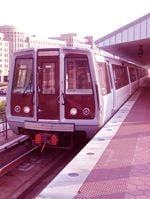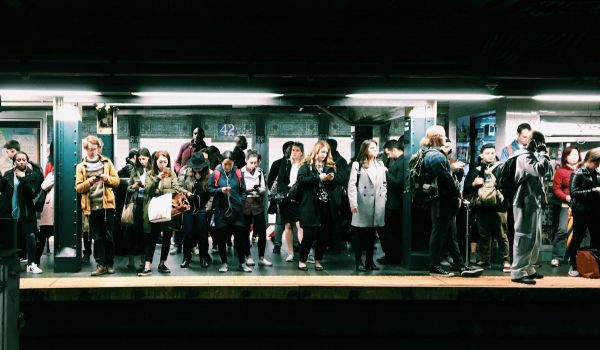Chicago engineer Harry Weese designed the Brutalist, Modern Metro system for Washington D.C. as a spoke-hub system. At the end of these spokes lay D.C.‘s suburbs — Montgomergy County, Falls Church, Franconia, Prince George’s County and Alexandria among others. The lines provide a clear line of transport into the heart of the city, however, suburb-to-suburb travel remains inconvenient. The Metro’s Red Line, for example, dips into D.C. as a “U” — from Shady Grove and Rockville to Silver Spring and Glenmont — a half-hour trip from either side. Traveling from Rockville to Silver Springs, on the other hand, takes well over an hour and longer during peak times. The solution has been presented as a new Purple line, which would connect the northern, Maryland spokes of the Metro wheel. Not everyone is excited about the new, above-ground light rail system. As with any major urban development, there are plenty of arguments and local politics involved.
Residents of Chevy Chase, an upscale northwestern D.C. suburb, are the main opponents of the light-rail Purple line. They say that a bus system would be cheaper, more efficient and more likely to receive federal funding.
Town leaders, who have objected to rail line along the Capital Crescent Trail between Bethesda and Silver Spring, said the report supports their contention that rapid buses running along Jones Bridge Road north of the trail would be more cost effective. Leaders said the study, released by a Montgomery planning board committee this week, shows that the state could build lanes and purchase buses for both a Purple Line and a Corridor Cities Transitway along the Interstate 270 corridor for less than $1 billion total. By comparison, a light rail Purple Line alone is estimated to cost as much as $1.8 billion. – from The Washington Post, July 25, 2008
The Greater Bethesda-Chevy Chase Coalition, whose mission statement is “To foster the creation of green space in the urban environment,” say that the Purple Line, which is proposed to be built above ground, should be buried underground.
Larry Rosen, a resident of Silver Spring, wrote to Gazette.net – “The point of a Purple Line must be to reduce traffic on our roads and the Beltway. It must be faster, more convenient, and cheaper than driving. The only choices are for an underground or an elevated train or express bus route. An elevated route would be like those in Chicago, traveling high above the cars. The disadvantage is they are unsightly. An underground route is the best, but the most expensive.”
Advocates and proponents of the Purple Line include The Washington Post, Chevy Chase Land Co., Maryland Governor Martin O’Malley (D) and a pro-Purple umbrella group called Purple Line NOW!
An opposing group, The Save The Crescent Trail Petition, argues that The Purple Line threatens the existence of The Crescent Trail, used by more than 1.5 million hikers and bikers every year. Their argument: “In the increasingly urbanized environment of lower Montgomery County, the Capital Crescent Trail provides a unique opportunity for families and friends to find recreation and peaceful reflection, in a natural setting. If run along the Capital Crescent Trail, the Purple Line would have a devastating effect on the Trail and surrounding communities. There is no transit system in the United States that runs trains or buses so frequently and so fast, while running so close to a popular trail, homes, and apartments, as the proposed light rail, Purple Line between Bethesda and Silver Spring.”
It seems as if the implementation of the Purple Line is more or less a battle of green intentions — save energy or physical green space, convenience and traffic management versus residential comfort. What takes priority here?
The facts on the Purple Line are available here. Also interesting to note, the projected usage of the Purple Line has been estimated at 68,000 per day.
Sound off on your opinions concerning the Purple Line. Is the billion dollar system worth connecting Bethesda, Chevy Chase, Silver Spring and New Carrollton? (Note that this also connects these neighborhoods with Amtrak) Are Chevy Chase citizens truly concerned with costs or more worried about the noise of construction? Is there a commuter demand between Bethesda and Silver Spring?



_600_350_80_s_c1.jpg)












